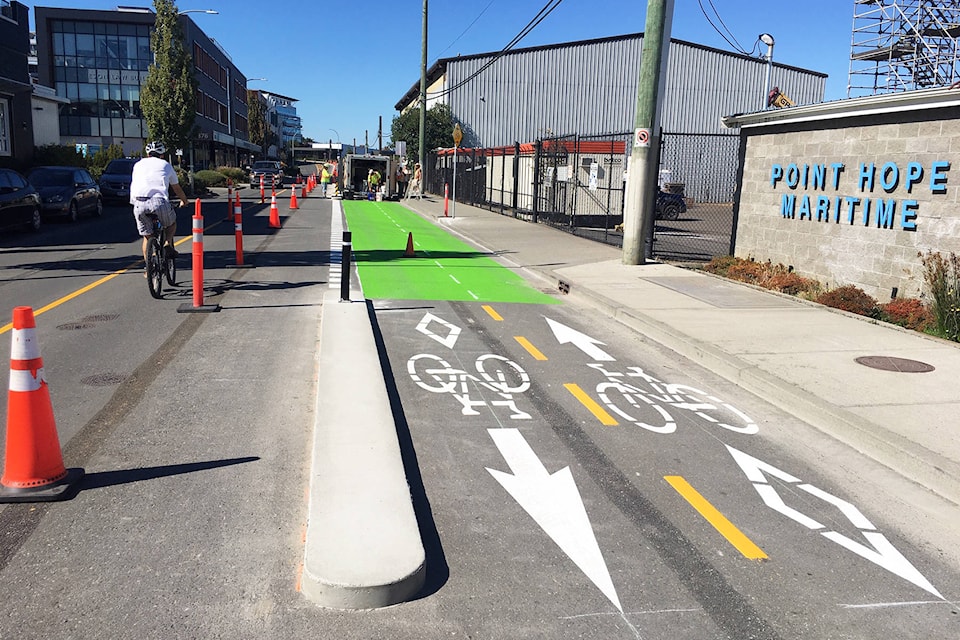By Tim Schewe
“Don’t design streets for the traffic that you have, design streets for the traffic that you want.”
This bit of wisdom from a traffic engineer may strike terror into the hearts of motorists but could be considered as long overdue by pedestrians and cyclists. The Active Transportation Design Guide from the Ministry of Transportation and Infrastructure addresses human powered modes of transportation, including bicycle lanes.
Municipalities around the province are constructing cycling infrastructure to provide dedicated space and in the case of separated bike lanes, enhanced safety. This has caused consternation for some drivers who are not sure how to deal with sharing the road.
A Kelowna resident observed that her community added bike lanes and almost immediately after there was a cyclist injured. She wanted to know how motorists should share the road with cyclists.
If the cycle and diamond symbol is not painted, or the lane is not signed, it is not a bicycle lane. The lane is often painted green to distinguish it from lanes intended for motor vehicles as well. Also, without the symbol or sign, the area to the right of the solid white “fog” line is the shoulder of the highway.
Is the bike lane treated as just another lane of traffic?
A bicycle lane is a designated use lane of the highway intended for use by cyclists only. Motor vehicle drivers cannot drive, stand or park in this lane. The exception to this rule occurs at intersections where a single broken white line exists. Drivers must yield to cyclists and then move to the right over the broken line to prepare for a turn.
When you are turning into a driveway or onto a road to the right and you have to cross a bike lane and there is a cyclist there, does the cyclist have the right of way?
The answer to this is yes, the cyclist does have the right of way and drivers must yield it prior to turning across a bicycle lane.
Turns at intersections must be made into the first available lane. The bicycle lane is not available on a right turn unless you are a cyclist, so motorists must travel a little further into the intersection before turning.
The Manual of Standard Traffic Signs and Pavement Markings for British Columbia contains a warning sign for this situation instructing that right turns must be made wider than normally.
Passing on the right is another consideration. Many drivers think nothing of passing an overtaken vehicle turning left but they cannot do this if it means traveling over the solid white line or off of the roadway. The rule is supposed to protect cyclists in the bicycle lane, which is not part of the roadway, but a wise cyclist would never count on proper driving behaviour.
Lastly, we need to examine the case where a motorist needs to turn into or leave a driveway or alley. You are permitted to cross over a designated lane in order to park or leave the highway. Just signal, shoulder check and enter if it is safe to do so, yielding to cyclists in the bicycle lane. If you are leaving the driveway or alley, you must yield the right of way to cyclists approaching closely enough to be a hazard.
Tim Schewe is a retired constable with many years of traffic law enforcement. To comment or learn more, please visit DriveSmartBC.ca For more news from Vancouver Island and beyond delivered daily into your inbox, please click here.
RELATED: VIDEO: New bike lanes on Victoria street leave some drivers confused
RELATED: More than 1 million cycling trips made on Victoria’s first bike lanes
